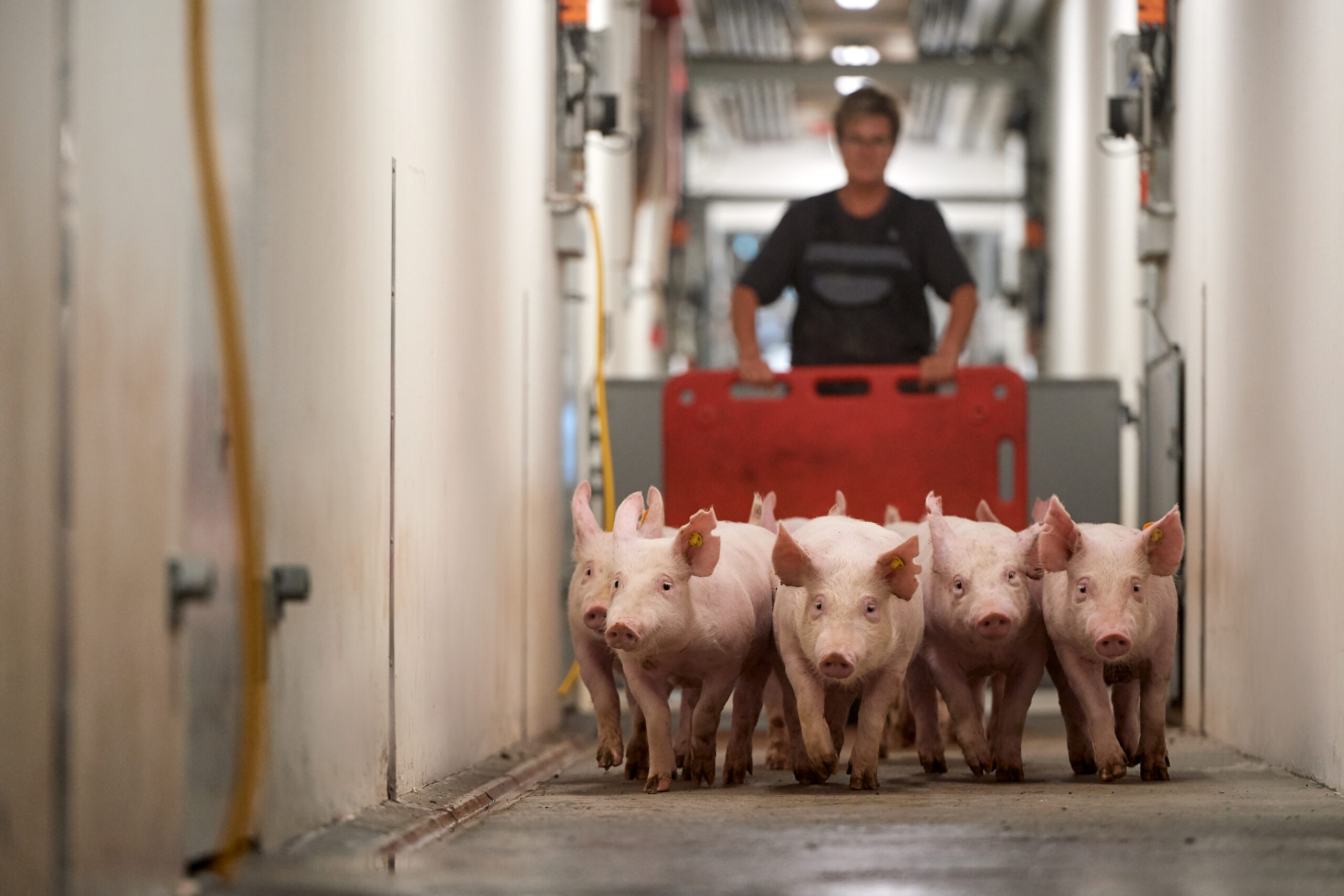DanBred breeding animals have an extraordinary genetic potential for reproductive performance. When a piglet is produced within the sow during gestation, we also want that piglet to survive. And your feeding strategy for gestating sows may actually be highly correlated to your success in the farrowing unit.
Below, our well-known pig expert, Thomas Sønderby Bruun, Senior specialist in SEGES Innovation, provides his key points on the optimal feeding strategy for gestating sows to ensure vital piglets.
1. The importance of optimal feeding during gestation
A common goal for pig producers around the world is that we want the sow to give birth to vital piglets. We also want quick farrowings with a high survival rate and a low need of birth assistance. The optimal feed strategy for gestating sows plays an important part in reaching that goal.
Feeding during gestation serves three purposes:
- Successful conception and embryo implantation
- Ideal body condition for the lactation period
- Optimum uterine and maternal growth
By focusing on having uniform sows at the end of gestation, you can increase the litter weight gain throughout lactation.
2. Focus on body condition
You can optimise the lactation performance of your hyper-prolific sows by focusing on sow body condition, i.e., backfat.
Backfat measurement is easy to perform after a little practice, and it can be the key to more uniform sows and to reach the optimal backfat level at farrowing. Based on a Danish study with more than 3,900 lactation periods, it is recommended to aim for at backfat thickness of 14-17 mm at farrowing to maximise the nursing capacity of the sow, and hence, average daily litter weight gain.

The backfat should be evaluated at:
- Weaning
- Around 28 days of gestation (or after pregnancy detection)
- 70-80 days of gestation (optional)
- Farrowing
It is important to implement a balanced feeding curve throughout gestation. You should group the sows according to body condition: skinny, thin, average, and fat sows – and feed them according to that.
3. Feed additives for gestating sows
Choosing certain dietary feed additives throughout gestation does not prove to be an easy way to improve average piglet birth weight. More lysine does not increase piglet birth weight. While other feed additives, such as L-cartinine or arginine, have the potential to affect birth weight, the results are not consistent.
On the other hand, high lysine and protein levels throughout gestation will results in too much muscle mass, which is not good. We want to control body weight gain of the sows and favour restorage of backfat throughout gestation. We want the sows to have the perfect backfat thickness at farrowing.
4. Early to mid-gestation feeding
The contact between the oocyte and the uterus happens in very early gestation and that is when the placenta is formed. You should feed the sows to ensure optimal placental development to secure strong, vital piglets.
A new trial at SEGES Innovation will focus on applied feeding of sows in mid-gestation to uncover possible positive effects on piglet birth weight. The results are expected to be released around October 2024.
5. Optimal feed level in late gestation
A feed level of 3.4 kg is optimal for sows in late gestation, i.e., 3-4 weeks before farrowing and until farrowing. That is given to the sow both for maintenance, but also to secure the foetal growth and growth of the udder.
SEGES Innovation has studied the effects of giving additional feed in late gestation:
- Adding 1 extra kg feed does not affect piglet birth weight.
- Giving extra feed, extra amino acids, and extra protein for late gestation also does not have any effect on birth weight.
Learn more about the research on increased feed levels’ effect on average piglet birth weight.
Choosing the optimal feeding strategy throughout gestation to achieve uniform sows at farrowing will contribute to easier management and success in the farrowing unit. Then, you can produce strong, vital piglets and ensure a good sow again at the next farrowing.










